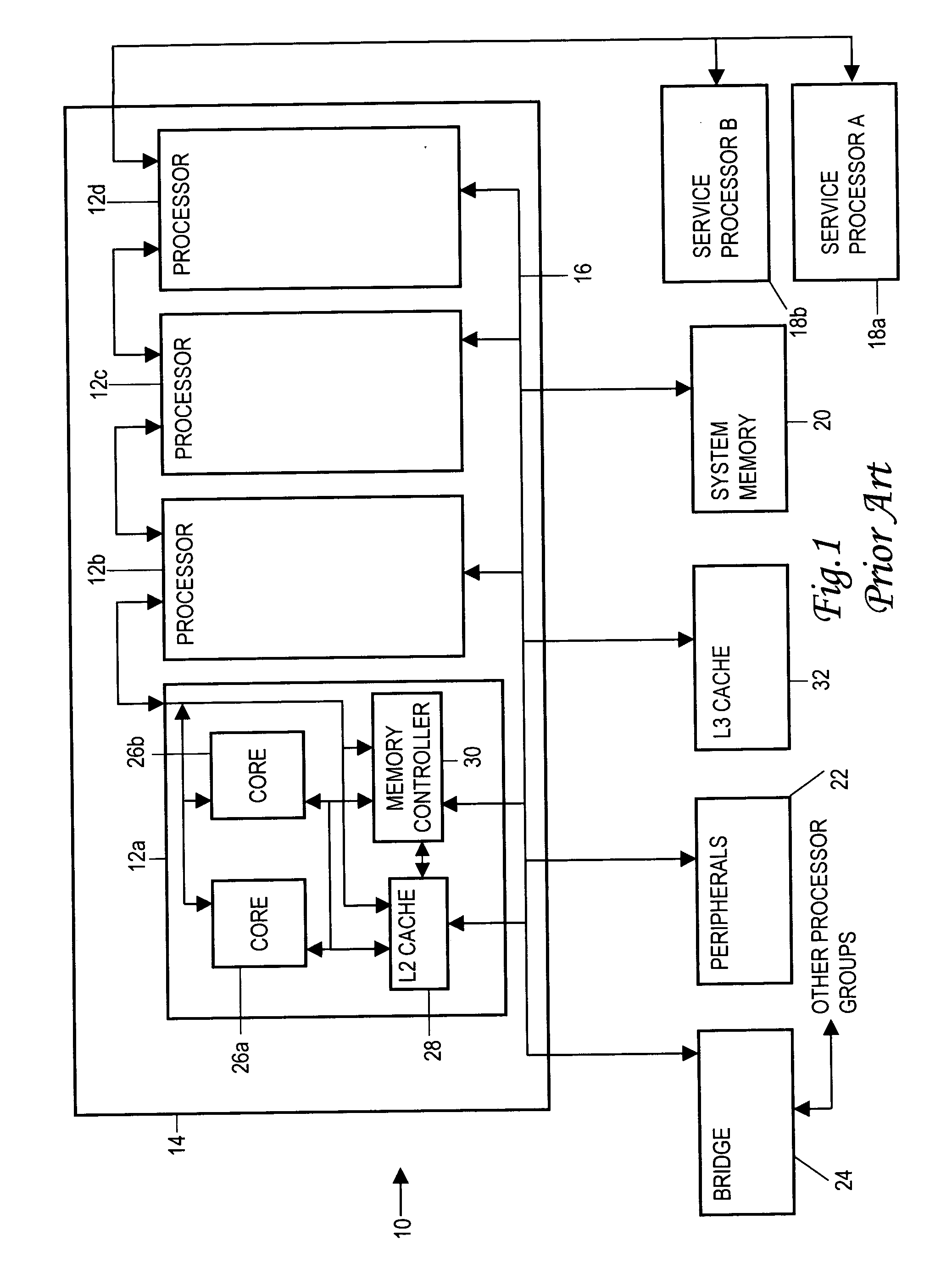Mechanism for FRU fault isolation in distributed nodal environment
a nodal environment and fault isolation technology, applied in the field of computer systems, can solve problems such as inability to determine the original source of the primary, many errors are allowed to propagate, and in-line error correction can introduce a significant delay into the system,
- Summary
- Abstract
- Description
- Claims
- Application Information
AI Technical Summary
Problems solved by technology
Method used
Image
Examples
Embodiment Construction
)
[0024] With reference now to the figures, and in particular with reference to FIG. 3, there is depicted one implementation of a processor group 40 for a symmetric multi-processor (SMP) computer system constructed in accordance with the present invention. In this particular implementation, processor group 40 is composed of three drawers 42a, 42b and 42c of processing units. Although only three drawers are shown, the processor group could have fewer or additional drawers. The drawers are mechanically designed to slide into an associated frame for physical installation in the SMP system. Each of the processing unit drawers includes two multi-chip modules (MCMs), i.e., drawer 42a has MCMs 44a and 44b, drawer 42b has MCMs 44c and 44d, and drawer 42c has MCMs 44e and 44f. Again, the construction could include more than two MCMs per drawers. Each MCM in turn has four integrated chips, or individual processing units (more or less than four could be provided). The four processing units for ...
PUM
 Login to View More
Login to View More Abstract
Description
Claims
Application Information
 Login to View More
Login to View More - R&D
- Intellectual Property
- Life Sciences
- Materials
- Tech Scout
- Unparalleled Data Quality
- Higher Quality Content
- 60% Fewer Hallucinations
Browse by: Latest US Patents, China's latest patents, Technical Efficacy Thesaurus, Application Domain, Technology Topic, Popular Technical Reports.
© 2025 PatSnap. All rights reserved.Legal|Privacy policy|Modern Slavery Act Transparency Statement|Sitemap|About US| Contact US: help@patsnap.com



